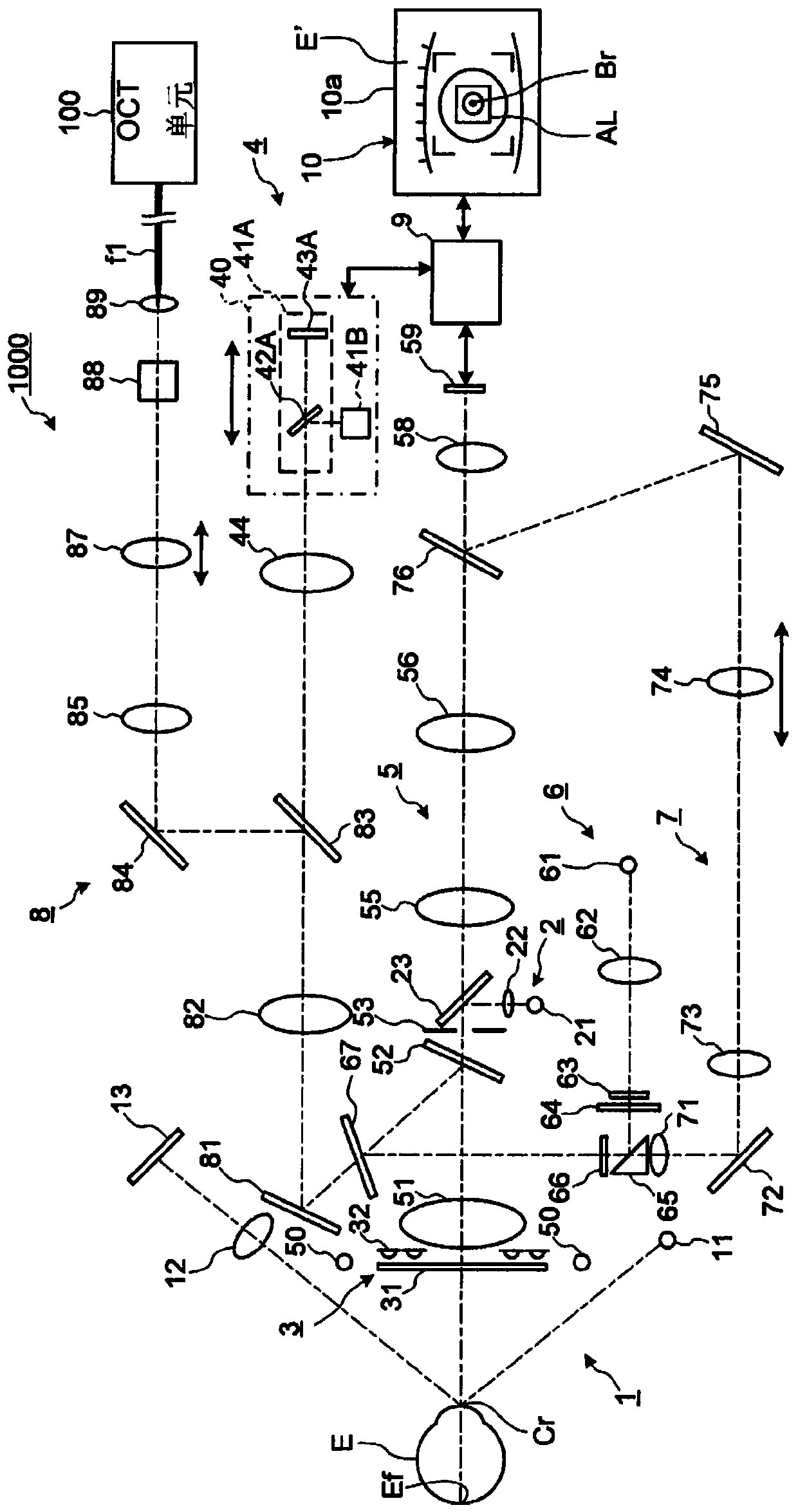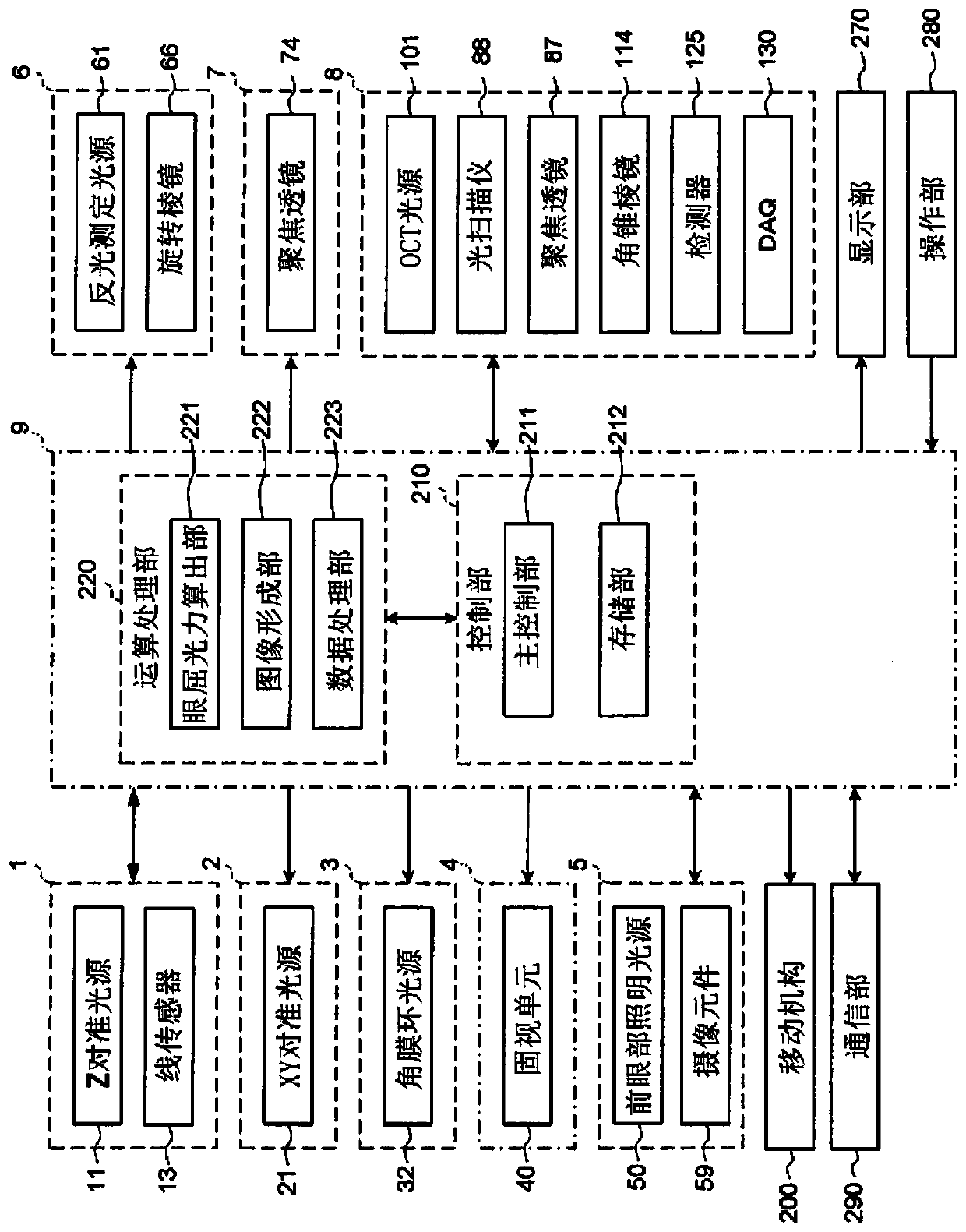Ophthalmologic apparatus and method of controlling the same
An ophthalmic device and technology of the control unit, which is applied in the fields of ophthalmoscope, medical science, and equipment for testing eyes, etc., can solve the problems of longer examination time and burden on the examinee, and achieve the effect of shortening the required time.
- Summary
- Abstract
- Description
- Claims
- Application Information
AI Technical Summary
Problems solved by technology
Method used
Image
Examples
no. 1 approach
[0043] The ophthalmic apparatus of the first embodiment includes a plurality of optical systems for performing a plurality of examinations and measurements, and can simultaneously perform a plurality of examinations and the like while simultaneously presenting fixed optotypes for performing a plurality of examinations and the like to the subject's eye. In the first embodiment, a common objective lens is provided in a plurality of optical systems, and a plurality of inspections and the like are performed using light having different wavelength ranges from each other. Hereinafter, an ophthalmic device capable of simultaneously performing reflectance measurement and OCT measurement among a plurality of objective measurements will be described, but the embodiments described below can be applied to combinations other than reflectance measurement and OCT measurement.
[0044]
[0045] figure 1 A structural example of the optical system of the ophthalmic apparatus of the first embo...
no. 2 approach
[0179] In the first embodiment, the case where the fixed optotype for areflection measurement and the fixed optotype for OCT measurement are independently moved has been described, but the configuration of the ophthalmic device according to the embodiment is not limited to this. For example, when the spot size of the light from the fixation light source projecting the fixed optotype for OCT measurement is very small, it can be moved integrally with the fixed optotype for reflective measurement. Hereinafter, the configuration of the ophthalmic apparatus of the second embodiment will be described focusing on points of difference from the first embodiment.
[0180] Figure 6A A structural example of the fixation unit 40 of the second embodiment is shown in . exist Figure 6A in, right with figure 1 The same parts are denoted by the same reference numerals, and explanations thereof are appropriately omitted.
[0181] The first fixed optotype projection system 41A includes a ha...
no. 3 approach
[0189] The structure of the fixation projection system 4 of the embodiment is not limited to the structure described in the first embodiment or the second embodiment. Hereinafter, the configuration of the ophthalmic device according to the third embodiment will be described focusing on points of difference from the second embodiment.
[0190] Figure 7 A structural example of the fixation unit 40 of the third embodiment is shown in . exist Figure 7 in, right with figure 1 or Figure 6A The same parts are denoted by the same reference numerals, and explanations thereof are appropriately omitted.
[0191] The first fixed optotype projection system 41A includes a half mirror 42A, a transmissive optotype chart 43A, and a light source 45A for illumination. From the illumination light source 45A toward the dichroic mirror 83 , the half mirror 42A, the optotype 43A, and the relay lens 44 are arranged in this order.
[0192] The second fixed sight target projection system 41B i...
PUM
 Login to View More
Login to View More Abstract
Description
Claims
Application Information
 Login to View More
Login to View More - R&D
- Intellectual Property
- Life Sciences
- Materials
- Tech Scout
- Unparalleled Data Quality
- Higher Quality Content
- 60% Fewer Hallucinations
Browse by: Latest US Patents, China's latest patents, Technical Efficacy Thesaurus, Application Domain, Technology Topic, Popular Technical Reports.
© 2025 PatSnap. All rights reserved.Legal|Privacy policy|Modern Slavery Act Transparency Statement|Sitemap|About US| Contact US: help@patsnap.com



